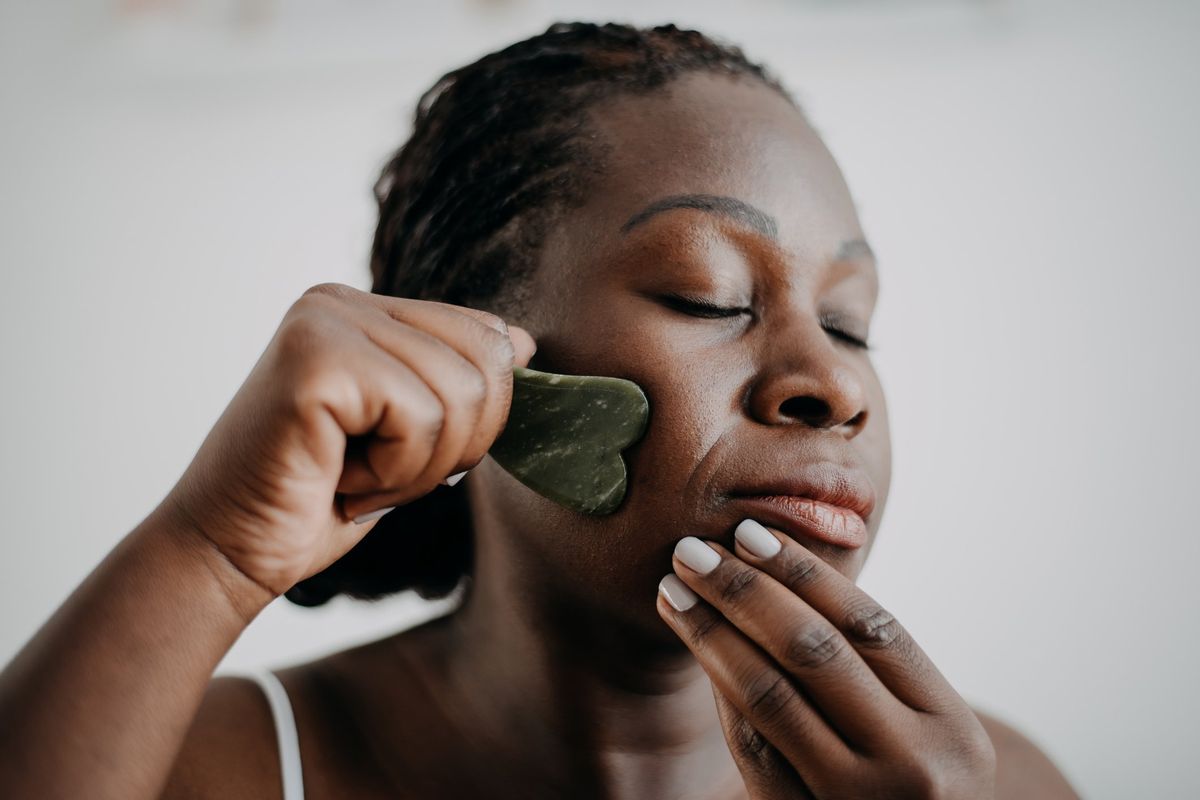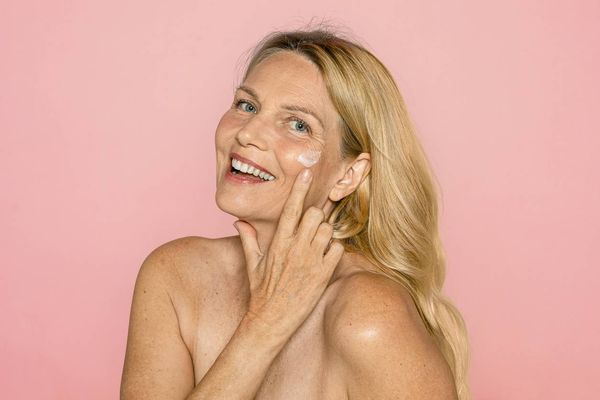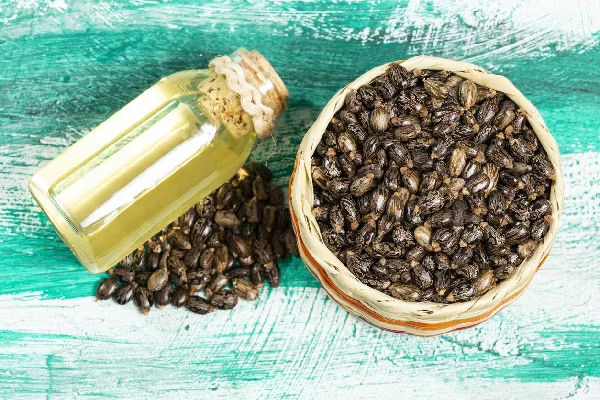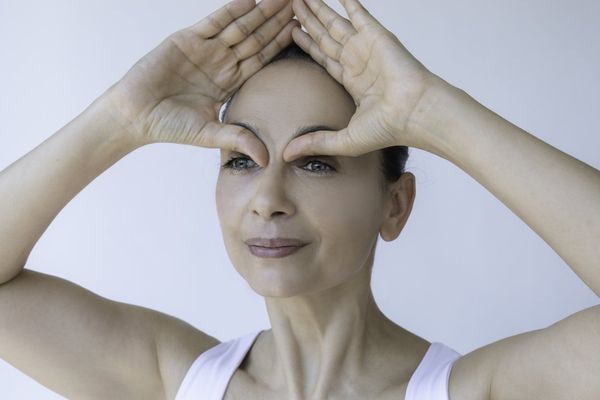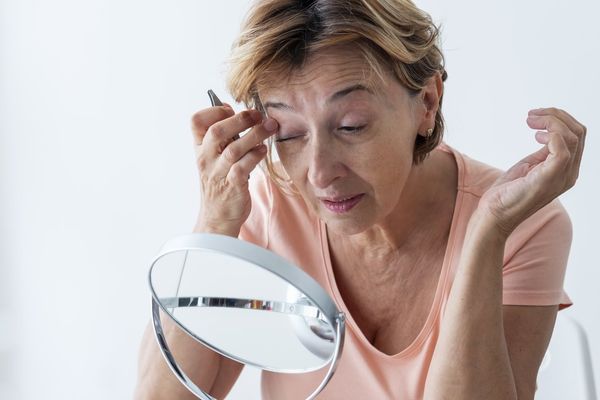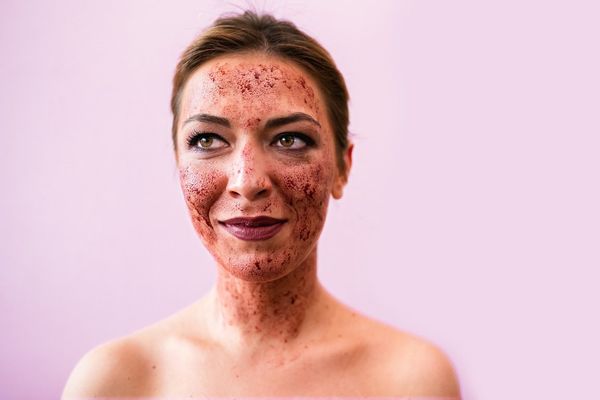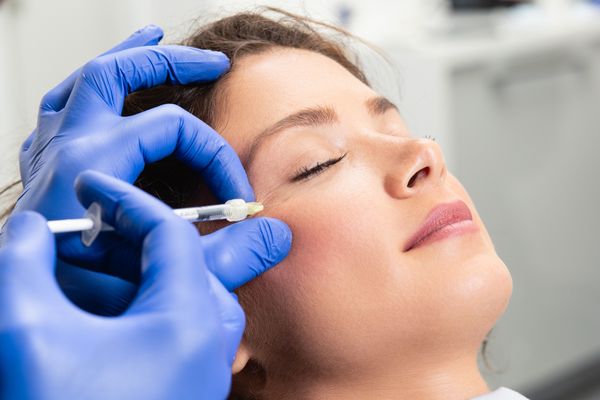You’ve probably seen videos on social media of people showing off their taunt jaw lines and perfectly sculpted cheekbones praising a small heart-shaped rock. You’re probably skeptical of said heart-shaped rock. And that’s a good thing — you can’t believe everything you see on the internet.
But research shows gua sha, a massage technique using a smooth-edge tool, may have health benefits and reduce inflammation in the body (think: puffiness in the face). It just may not be the dramatic transformation we’re all hoping for.
Here’s what you need to know about the ancient massage technique everyone is talking about.
What is gua sha?
Gua sha (pronounced “gwah-sha”) is a type of massage that uses a smooth-edged tool to help promote circulation, healing and reduce inflammation.
Gua sha is a form of traditional Chinese medicine. The idea is that your energy needs to flow freely. If your energy is stuck, the tool-assisted massage can help free the flow by gently scraping (applying steady pressure) in one direction.
Gua sha can be used on the body and the face. For the body, gua sha is usually performed by a technician or an acupuncture specialist. The technique causes petechiae, small red dots on your skin from bleeding blood vessels under the skin, and can cause bruising. This sounds a little scary but the process shouldn’t hurt (if you’re sensitive to pressure, you can talk to the technician about that) and any skin changes should go away after a few days.
Gua sha therapy for the face is gentler and you shouldn’t see any red dots or bruising (if you do, that means you’ve used too much pressure). Most people can DIY gua sha as part of a beauty routine at home.
What are the health benefits of gua sha?
Research is ongoing about the health benefits of gua sha, but studies show that it may help ease symptoms of health conditions. These can include:
- Chronic pain
- Headache attack
- Neck pain
- Back pain
- Arthritis
- Fibromyalgia
- Breast fullness after giving birth
One study found participants in perimenopause had a reduction in symptoms, including hot flashes, insomnia and fatigue compared to participants who didn’t have gua sha therapy.
Who shouldn’t use gua sha
Most people shouldn’t have a problem with gua sha. But you should talk to your healthcare provider before you try gua sha if you have circulation problems, take blood thinner medications or have health conditions, such as diabetes.
How to use gua sha
The DIY version of gua sha is different for your face and your body.
- Face gua sha: After you find your tool, start by spreading a few drops of oil on your face so it will glide over your skin. Most exercises start toward the middle of your face. Depending on the area you’re working on, you will gently scrape the tool across your skin in one direction upward and/or outward (not back and forth or in circles. Don’t get fancy.). Remember, you don’t want to apply too much pressure. The lighter the better.
- Body gua sha: Like gua sha for your face, start by adding oil to the skin you’re going to massage. Scrape the smooth-edged tool over the skin using long, upward strokes (toward the heart) and a good amount of pressure to stimulate blood flow to the area.

